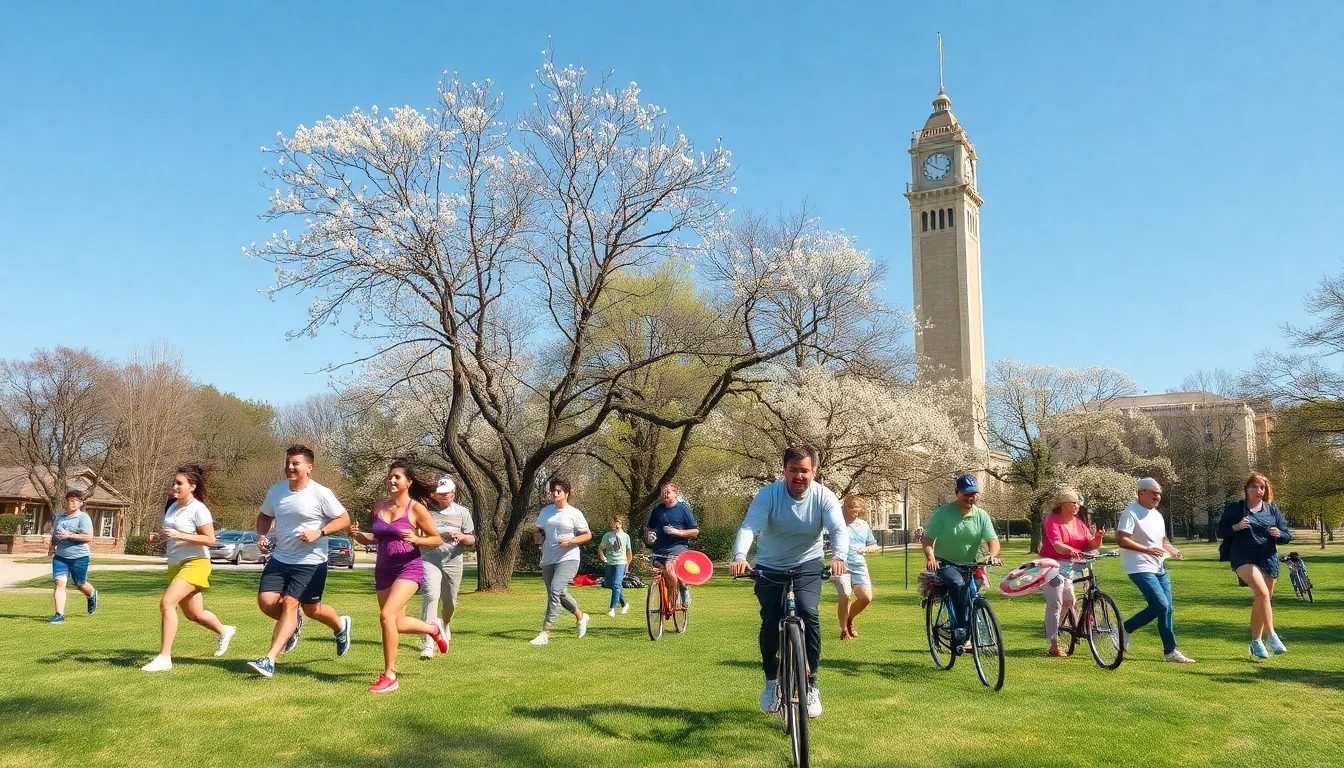As the seasons shift and daylight dances in and out, the age-old question resurfaces: when’s the time changing? It’s that quirky ritual where we all pretend to love losing an hour of sleep in spring, only to relish the extra hour of daylight in the fall. Who wouldn’t want to wake up at what feels like the crack of dawn just to enjoy a little more sunshine?
Table of Contents
ToggleUnderstanding Time Changes
Changing the clocks for daylight saving time occurs twice a year. This adjustment aims to make better use of daylight during the longer days of spring and summer.
What Is Daylight Saving Time?
Daylight saving time refers to the practice of moving the clocks forward by one hour in the spring and back again in the fall. This shift increases daylight during evening hours, benefiting outdoor activities. Springing forward typically happens on the second Sunday in March, while falling back occurs on the first Sunday in November. People often enjoy the extra hour of daylight in the evening.
The History of Time Changes
The concept of changing time dates back to Benjamin Franklin, who proposed it in 1784 for energy conservation. However, widespread adoption began during World War I as a means to save fuel. Countries worldwide implemented daylight saving time during various periods, with many continuing into the 20th century. The Uniform Time Act of 1966 established standard guidelines in the United States. Recent debates focus on the effectiveness of time changes, with some states considering permanent adoption of daylight saving time.
When Is the Time Changing?

Daylight saving time occurs twice each year, with specific dates for changing the clocks. These dates vary by year, following a consistent pattern.
Spring Forward: Dates and Times
Clocks spring forward one hour on the second Sunday in March. In 2024, this change occurs on March 10 at 2:00 AM. By setting clocks ahead, people enjoy an extra hour of evening sunlight. Many find this change beneficial for outdoor activities and social events. Daylight saving time helps optimize daylight, allowing for longer afternoons and evenings.
Fall Back: Dates and Times
The fall clock adjustment occurs on the first Sunday in November. In 2024, clocks fall back one hour on November 3 at 2:00 AM. This change restores the hour lost in the spring, providing longer mornings. Enjoying more daylight in the morning suits some people’s schedules better, particularly for those who prefer early starts. As days shorten, the switch helps align natural light with daily routines.
Reasons for Time Changes
Daylight saving time influences various aspects of life, notably the economy and health.
Economic Impact
Time changes play a significant role in economic activities. Retailers often report increased sales during daylight saving time due to extended shopping hours. Construction industries benefit from more daylight, allowing for longer workdays. Studies indicate that outdoor recreation generates higher revenue as families engage in activities during the evening. In contrast, some sectors face additional costs related to adjusting schedules and systems. Businesses may also experience productivity fluctuations as employees adapt to the time change. Overall, economic adjustments stem from the effects daylight saving time has on consumer behavior and workforce efficiency.
Health Considerations
Health implications arise from the twice-yearly time changes. Sleep disruption frequently occurs in the days following the adjustments, leading to increased fatigue and decreased alertness. Research links these disruptions to higher rates of heart attacks and strokes during transition periods. Mental health can also be impacted as individuals deal with changes in routine. Additional stress results from adjusting sleep schedules and coping with fatigue. Balancing these health factors involves recognizing the benefits of increased sunlight during evening hours for physical activity and mood enhancement. Addressing these challenges ensures a smoother transition each year.
Global Perspectives on Time Changes
Time changes vary widely around the world, with numerous countries participating in daylight saving time while others refrain from adjusting their clocks. This divergence showcases unique approaches to maximizing daylight.
Countries That Observe Daylight Saving Time
Several countries use daylight saving time to extend evening light during warmer months. The United States, Canada, and most European nations, including the United Kingdom and Germany, follow this practice. In these regions, clocks spring forward in March and fall back in November, aligning with the established schedule. Australia and New Zealand also adapt their clocks, though their timing differs, reflecting seasonal variations in the Southern Hemisphere. These regions aim to enhance outdoor activities and reduce energy consumption.
Countries That Don’t Observe Time Changes
Certain nations opt out of daylight saving time completely. Countries like Japan, India, and China have chosen to maintain a standard time year-round. The consistency in time alleviates confusion and enhances efficiency across daily activities. Some regions within the United States, such as Arizona and Hawaii, also disregard the time change. The decision often stems from cultural preferences or geographical considerations, highlighting the complexity of global timekeeping practices.
Daylight saving time continues to spark conversation and debate across the globe. As people prepare for the upcoming clock changes, they often weigh the benefits of longer evenings against the drawbacks of disrupted sleep patterns. The tradition of adjusting clocks twice a year remains a significant aspect of modern life, influencing everything from economic activities to personal health.
As the next time change approaches, individuals can look forward to the extra daylight and the opportunities it brings for outdoor enjoyment. Whether one loves or loathes the time changes, it’s clear that this annual ritual shapes daily routines and cultural practices in unique ways.


